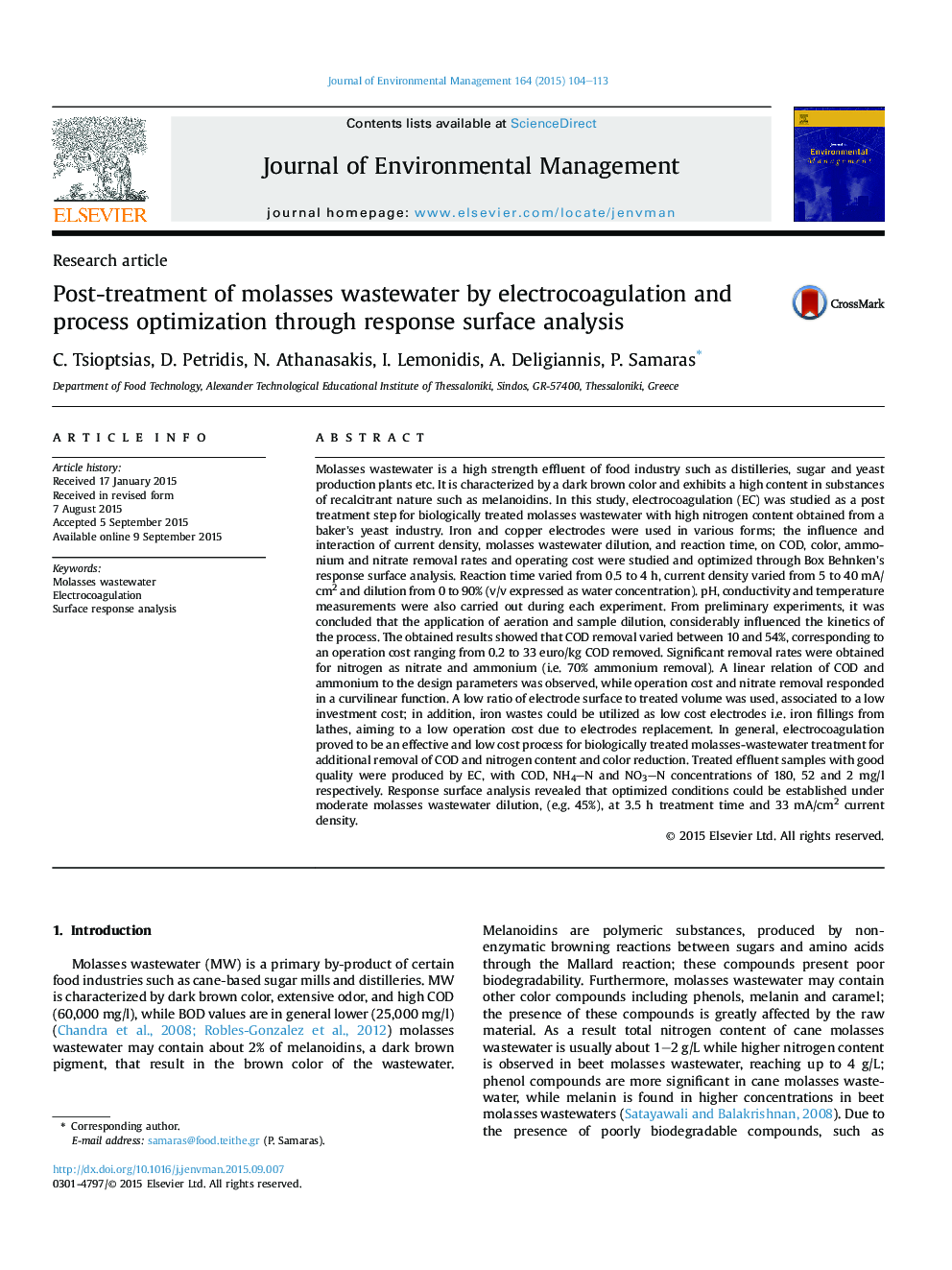| Article ID | Journal | Published Year | Pages | File Type |
|---|---|---|---|---|
| 1055413 | Journal of Environmental Management | 2015 | 10 Pages |
•Use of low ratio of electrode surface to reactor volume for molasses wastewater treatment.•Design of experiments using response surface analysis.•Optimization of electrocoagulation operation conditions for high removal rate of COD, nitrogen and color.•Identification of low cost process conditions.
Molasses wastewater is a high strength effluent of food industry such as distilleries, sugar and yeast production plants etc. It is characterized by a dark brown color and exhibits a high content in substances of recalcitrant nature such as melanoidins. In this study, electrocoagulation (EC) was studied as a post treatment step for biologically treated molasses wastewater with high nitrogen content obtained from a baker's yeast industry. Iron and copper electrodes were used in various forms; the influence and interaction of current density, molasses wastewater dilution, and reaction time, on COD, color, ammonium and nitrate removal rates and operating cost were studied and optimized through Box Behnken's response surface analysis. Reaction time varied from 0.5 to 4 h, current density varied from 5 to 40 mA/cm2 and dilution from 0 to 90% (v/v expressed as water concentration). pH, conductivity and temperature measurements were also carried out during each experiment. From preliminary experiments, it was concluded that the application of aeration and sample dilution, considerably influenced the kinetics of the process. The obtained results showed that COD removal varied between 10 and 54%, corresponding to an operation cost ranging from 0.2 to 33 euro/kg COD removed. Significant removal rates were obtained for nitrogen as nitrate and ammonium (i.e. 70% ammonium removal). A linear relation of COD and ammonium to the design parameters was observed, while operation cost and nitrate removal responded in a curvilinear function. A low ratio of electrode surface to treated volume was used, associated to a low investment cost; in addition, iron wastes could be utilized as low cost electrodes i.e. iron fillings from lathes, aiming to a low operation cost due to electrodes replacement. In general, electrocoagulation proved to be an effective and low cost process for biologically treated molasses-wastewater treatment for additional removal of COD and nitrogen content and color reduction. Treated effluent samples with good quality were produced by EC, with COD, NH4–N and NO3–N concentrations of 180, 52 and 2 mg/l respectively. Response surface analysis revealed that optimized conditions could be established under moderate molasses wastewater dilution, (e.g. 45%), at 3.5 h treatment time and 33 mA/cm2 current density.
